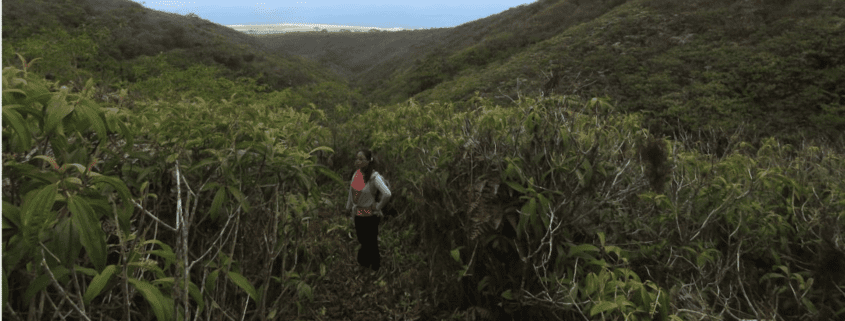Critically Endangered Galápagos Petrel Chicks Spotted in Rainforest Trust Reserve
Rainforest Trust is thrilled to report not one, but two Critically Endangered birds species are thriving in their reserves this spring.

A Jocotoco staff member with a Petrel Chick. Photo by Fundación Jocotoco.
Earlier this month, a juvenile Blue-eyed Ground Dove was photographed during a rare sighting in Brazil. And this week, Rainforest Trust partner Fundación Jocotoco shared news that they located a group of Galápagos Petrel nests in the Jocotoco Reserve on Galápagos. This discovery is particularly exciting because there were no previously known colonies of petrels in the protected area. Colonies of the large, long-winged bird are rare and threatened, so evidence of population growth is an optimistic sign for the future of the species.
Petrels tend to nest in burrows or natural cavities on sloped hillsides which make them particularly vulnerable to introduced predators like cats, rats and pigs. The population had decreased significantly by the 1980s, but recent conservation efforts toward protecting nests from predators have preserved and increased the birds’ numbers. With the global population at an estimated 10,000 to 20,000, efforts to maintain the species look promising.
Now that a new colony of Galápagos Petrels have nested in the project site, it will be easier for Jocotoco to monitor the species and ensure long-term survival. The partner plans to hire two park guards and a Geographic Information Systems professional to create a map of the nests in the reserve to track growth.
The 250-acre reserve, established earlier this year by Rainforest Trust and Jocotoco, protects rainforest in the highlands of San Cristóbal Island, Galápagos. The safeguarding of this area was particularly significant to our organization. Long before the official designation, our partners spent time studying the unique resident species and identifying priority conservation areas on the island.
Rainforest Trust is thrilled to contribute to the rich scientific history of San Cristóbal — which famously served as the inspiration for Charles Darwin’s theory of evolution by natural selection — by providing a safe haven for its unique biodiversity. Hopefully, more threatened species will find protection in the reserve and expand their populations.
Header image: Researcher exploring the upper-western coast of the reserve. Photo by Fundación Jocotoco.




